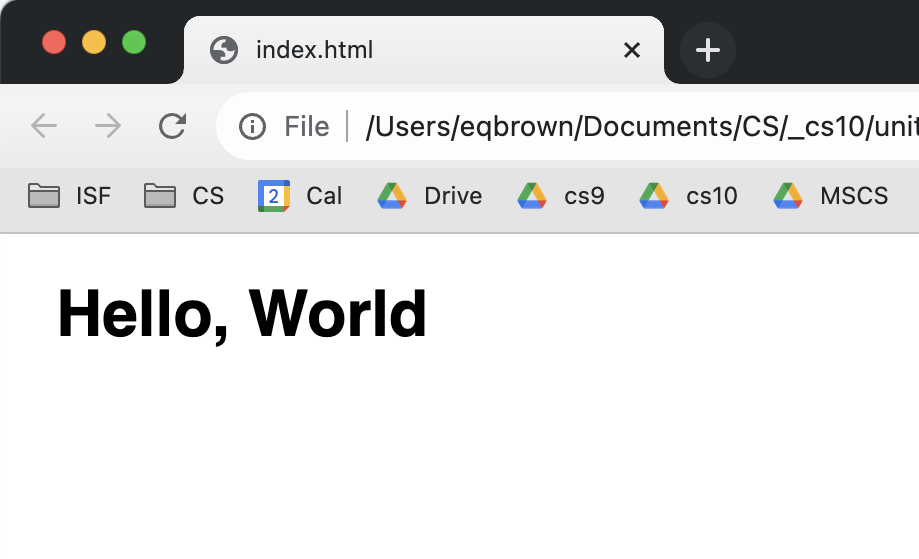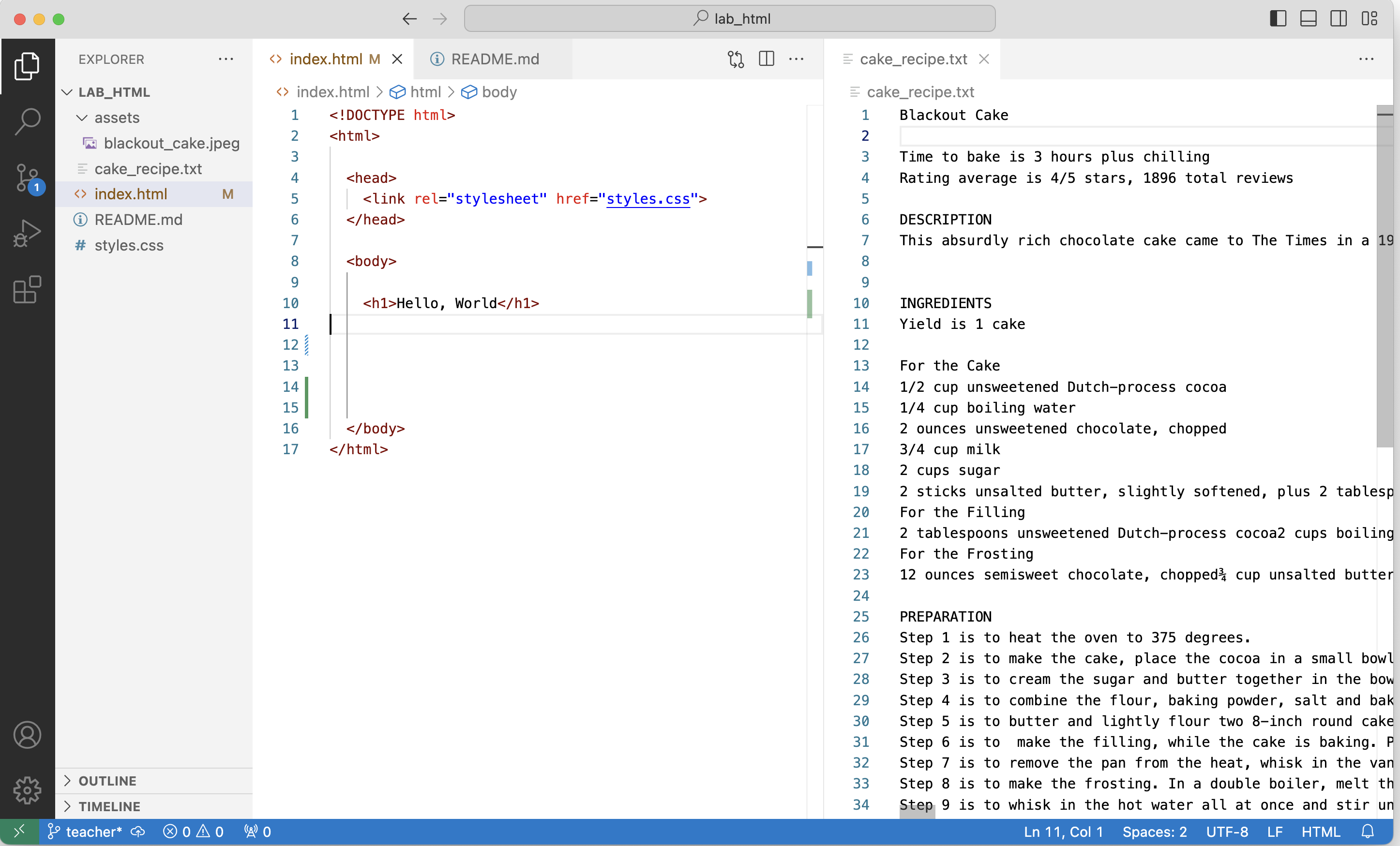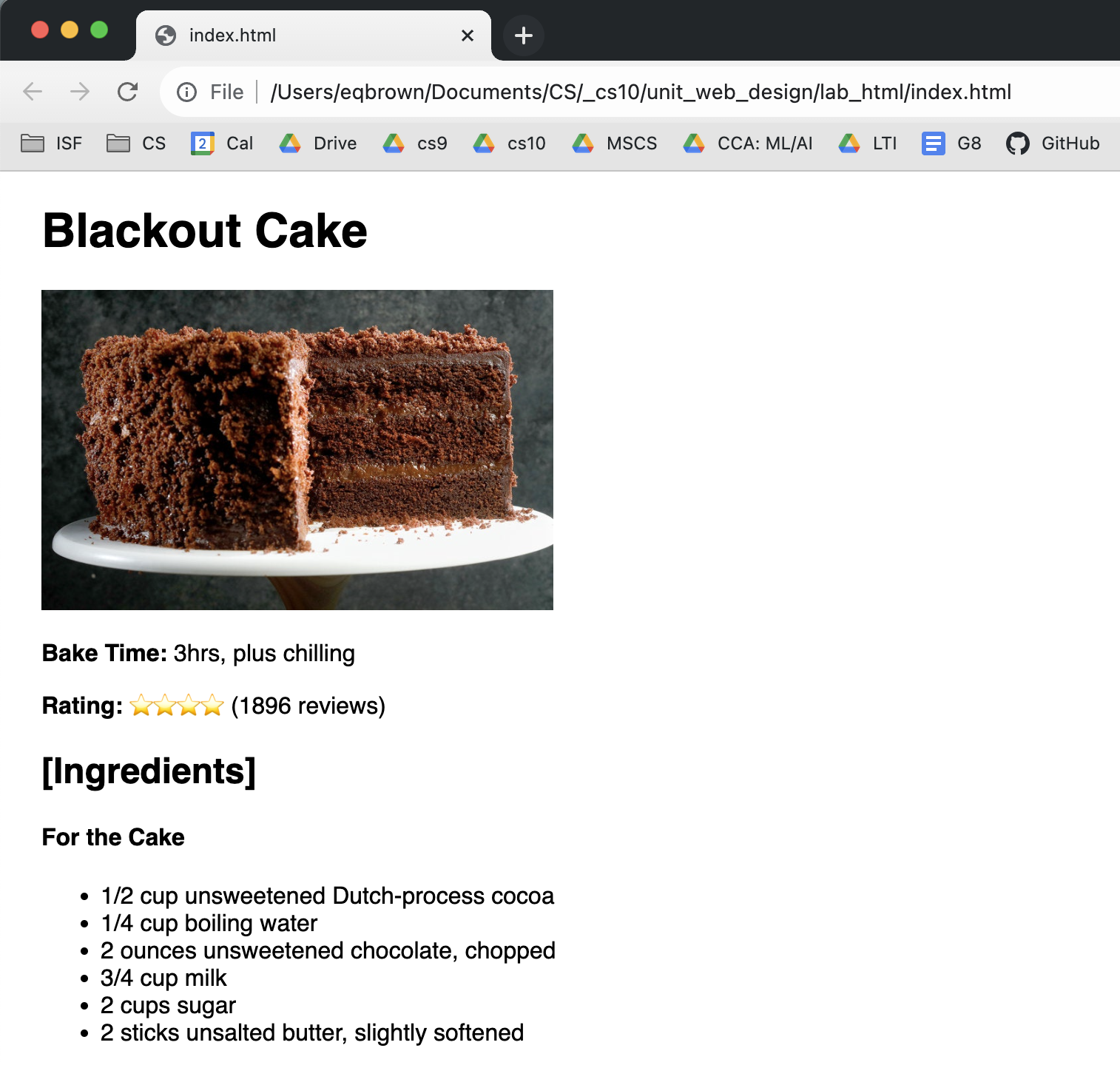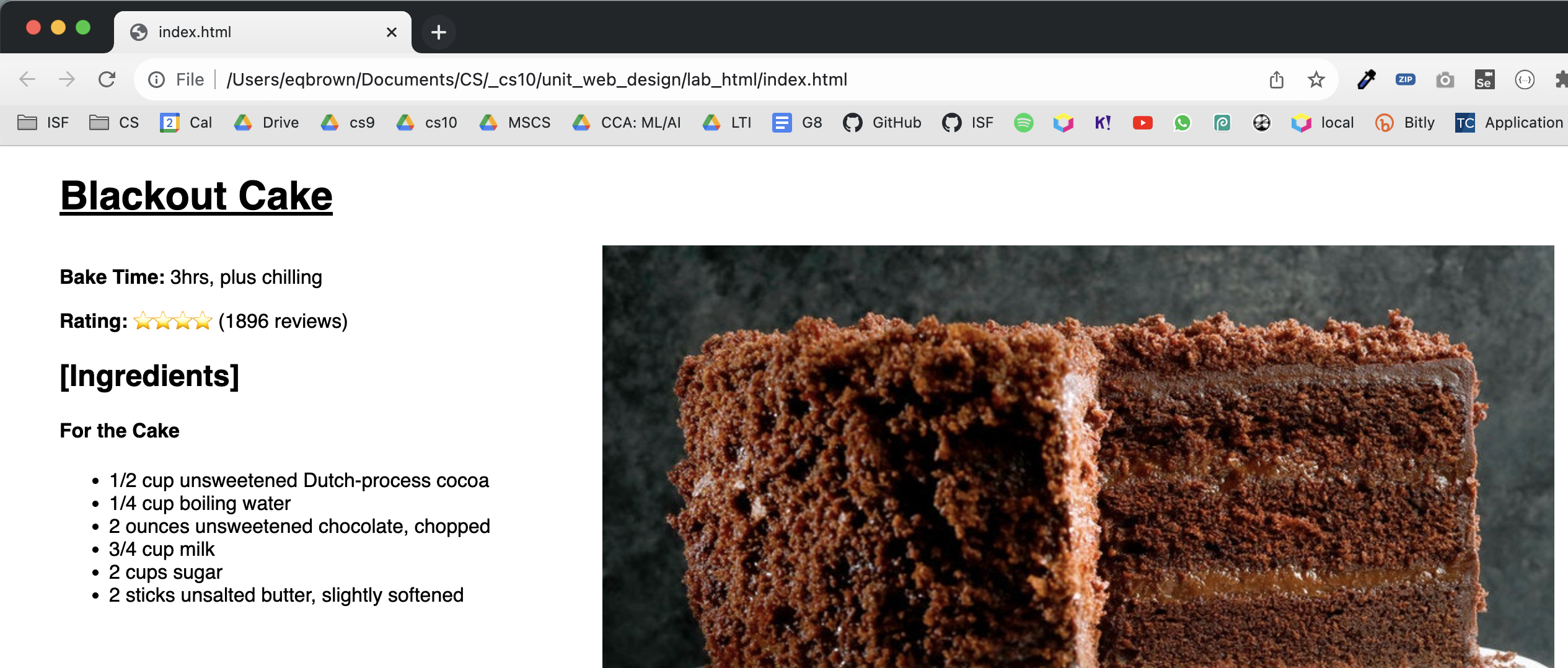HTML Lab #
In this lab, you will start learning to write HTML code! HTML defines the content and the structural elements of a web site.

[0] Set up #
We are now in the Web Design unit, so you’ll need to make a new folder.
💻 In the Terminal, go into your making_with_code/cs10 folder, create a unit04_webdesign folder, cd into it.
cd ~/desktop/making_with_code
mkdir unit04_webdesign
cd unit04_webdesign
💻 Then, clone your starter code and cd into the lab
Be sure to change yourgithubusername to your actual Github username.
git clone https://github.com/the-isf-academy/lab_html_yourgithubusername
cd lab_html_yourgithubusername
👾 💬 No need for the Poetry shellIn this unit we will not be using Python, and so we will NOT use the Poetry shell.
Don’t worry, we’ll return to Python in the next unit - Web Apps :)
[1] Your First Webpage #
💻 Let’s start by openning index.html in your web browser: open index.html. It should automatically open in your system’s default web browser.
index.htmlis the most common name for the start page of a web site.

💻 Now let’s look at the code, open the lab_html folder in your code editor: code .
📄 This repository has the following files:
index.html- you will writeHTMLhereassets/blackout_cake.jpeg- this photo will go on your pagecake_recipe.txt- recipe content informationstyles.css-CSSstyle sheet
💻 It is up to you to create a webpage for a cake recipe, by using the information in cake_recipe.txt. Be sure to include all of the key information to make the cake, but feel free to rearrange it or eliminate unnecessary words.
It will be helpful to have the
index.htmlandcake_recipe.txtfiles open side by side. Then you can easily copy specific recipe lines to thehtmlfile.

💻 Your index.html must include at least 1 instance of each structural HTML element. You can find information on HTML elements/tags
HERE.
- div
- heading (h2, h3, or h4,)
- paragraph text
- image
- link
- italic text
- bold text
- ordered bullet points
- unordered bullet points
🔍 Google will be your best friend this unit! You can Google
html div(or replace div with any other element) to quickly find relevant resources.
💻 As you edit index.html, save ⌘+s the file and refresh ⌘+r the web browser. This will allow you to see updates as you edit the code!
Use
⌘+tabto easily switch between VS Code and your web browser. This will save you a ton of time :)

[2] Deliverables #
⚡✨ Once you've successfully completed the lab:☑️ Fill out this Google form
💻 Push your code to Github.
- git status
- git add -A
- git status
- git commit -m “describe your code and your process here”
be sure to customize this message, do not copy and paste this line
- git push
[3] Extension: CSS #
💻 Add custom styling to your page by editing styles.css - a few ideas:
- change the color of the sub-headings
- change the color of the link when you hover over it
- use multiple fonts throughout the page (e.g. a different font for the title)
- add a roudned border box around a section of the page
📖 Here are a few helpful resources for CSS. Though again, Google is often the most helpful for html and css.
CSS Layout #
CSS can be also be used to apply layout designs to your webpage. Can you get the image to be next to the intro text?
💻 Add custom layout to your page by incorporating a flexbox layout.
